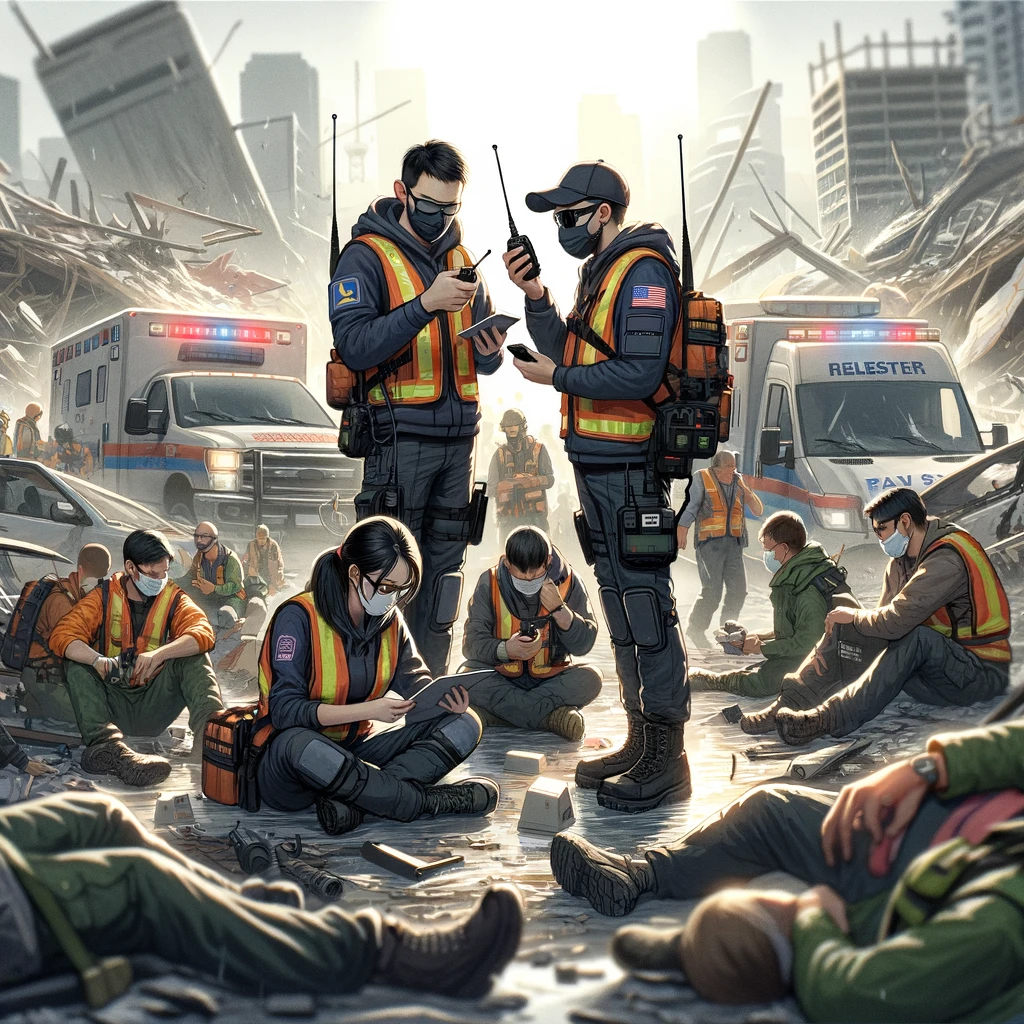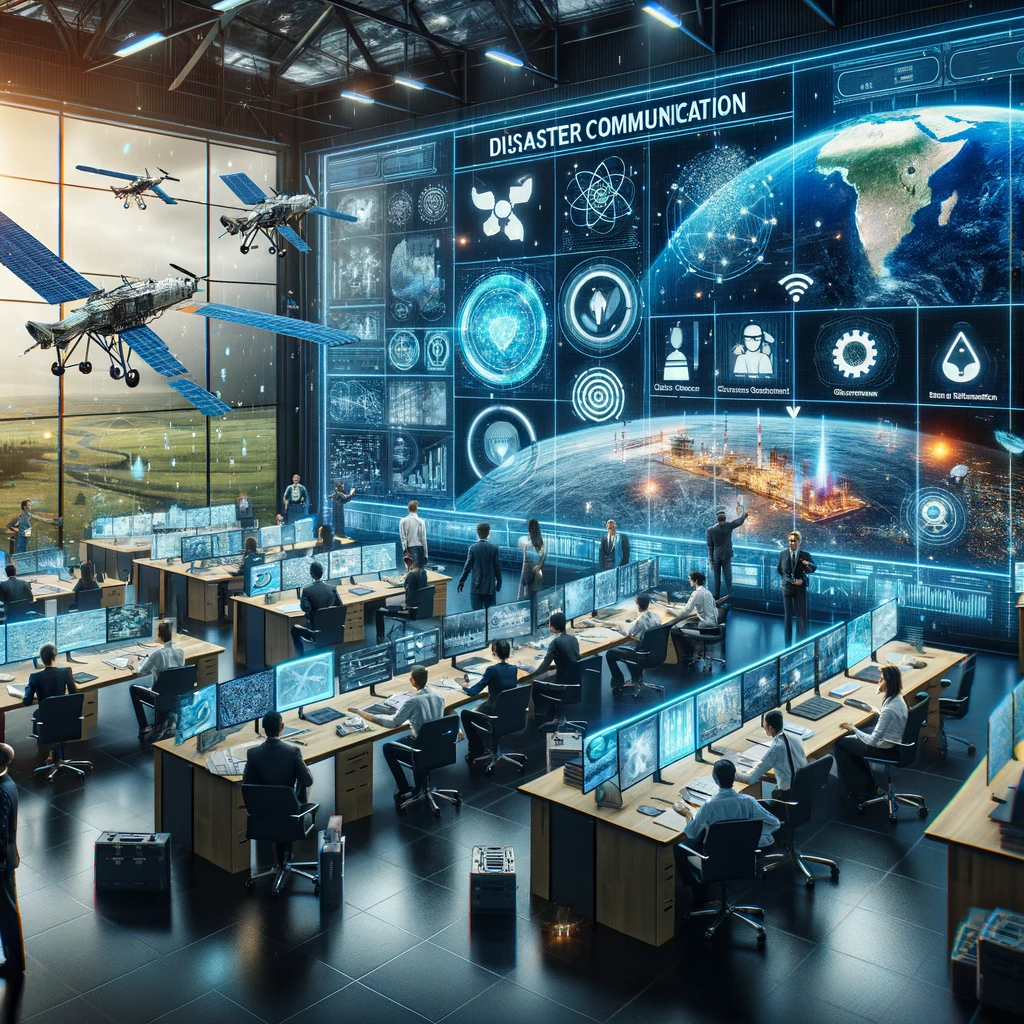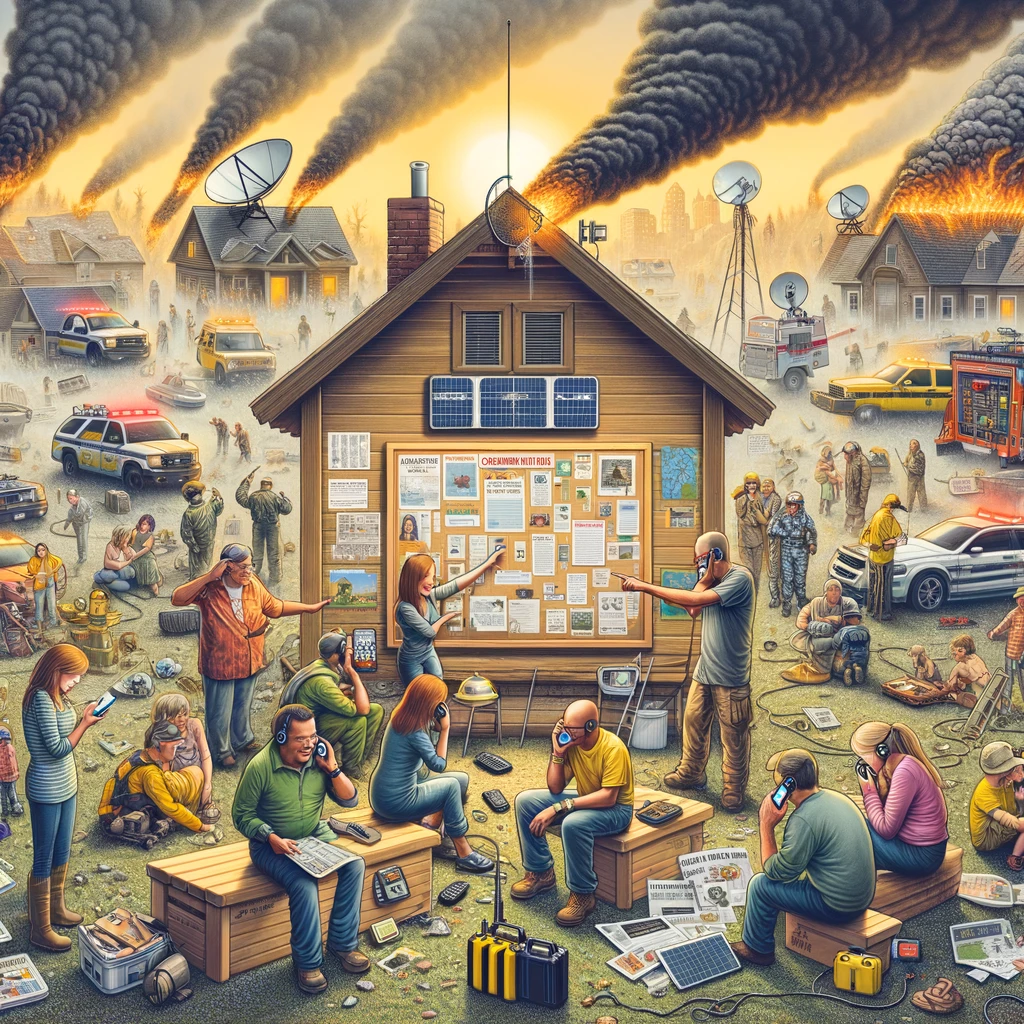In the face of natural or human-made disasters, communication becomes a lifeline, providing essential information, coordinating rescue and relief efforts, and connecting separated loved ones. However, these critical times often see the failure of traditional communication systems, leaving individuals and communities struggling to stay informed and connected. This blog explores the challenges of communication during disasters, offers practical advice for maintaining contact, and highlights innovative solutions that are making a difference.
Understanding the Challenge
Disasters, whether natural (such as hurricanes, earthquakes, and wildfires) or human-made (including terrorist attacks and industrial accidents), can severely impact communication infrastructure. Power outages, damage to cell towers, and overloaded networks are common issues, making it difficult to use mobile phones, the internet, and landlines—tools we rely on daily for communication.
The Importance of Communication in Disaster Scenarios

Effective communication during a disaster facilitates emergency response, helps in the efficient distribution of resources, and ensures that individuals can receive critical updates about the situation and safety instructions. It also enables people to reach out to their family and friends, reducing the psychological impact of disasters by providing reassurance and support.
Preparing for Communication Failures
Preparation can significantly mitigate the impact of communication failures during disasters. Here are several steps individuals, families, and communities can take to prepare:
Developing a Communication Plan
- Emergency Contact Information: Compile a list of essential contacts, including family members, friends, and local emergency services. Ensure everyone in your household has a copy, ideally stored in both digital and physical formats.
- Designate an Out-of-Area Contact: Choose a contact who lives outside your immediate area. During a disaster, it might be easier to make long-distance calls, and this person can act as a central point for messages among separated group members.
- Understand the Communication Systems in Place: Familiarize yourself with the emergency alert systems in your area, such as emergency text alert services from local government agencies.
Investing in Alternative Communication Tools
- Battery-Powered or Hand-Crank Radios: These can be vital for receiving updates from emergency broadcasting systems when power and internet services are down.
- Satellite Phones: Unlike mobile phones that rely on cellular networks, satellite phones can make calls almost anywhere in the world, provided there’s a clear line of sight to the sky.
- Two-Way Radios (Walkie-Talkies): These devices can be especially useful for local communication when cell service is unavailable.
Innovative Solutions for Disaster Communication

The limitations of traditional communication systems in disaster scenarios have spurred innovation, leading to new solutions that can operate in the absence of standard infrastructure:
Mesh Networks
Mesh networks allow direct, peer-to-peer communication between devices without relying on the internet or cellular networks. Apps like FireChat and Bridgefy enable users to send messages and share information using Bluetooth and Wi-Fi, creating a “mesh” of interconnected devices.
Portable Internet Solutions
Companies are developing portable internet systems that can be deployed quickly in disaster zones to restore connectivity. These include mobile hotspots that use satellite connections to provide internet access and drones that can deliver Wi-Fi coverage from the air.
Emergency Alert Systems
Advancements in emergency alert systems ensure that critical information reaches as many people as possible. Systems like the Integrated Public Alert and Warning System (IPAWS) in the United States can send alerts to all mobile phones in a specified area without requiring any opt-in from users.
Staying Informed During Disasters
Access to accurate and timely information is crucial during a disaster. Here are some tips for staying informed:
- Monitor Local News and Radio: Emergency broadcasting systems will provide regular updates about the disaster and instructions for staying safe.
- Use Social Media Wisely: Platforms like Twitter and Facebook can be valuable sources of real-time information. Follow reputable sources, such as local government agencies and news outlets.
- Emergency Alert Apps: Download apps from trusted organizations like the Red Cross or FEMA, which provide alerts and information on what to do before, during, and after disasters.
Communication Strategies for Different Scenarios
Different disasters pose unique challenges for communication. Here are strategies tailored to various scenarios:
Natural Disasters (Hurricanes, Earthquakes, Wildfires)
- Before the Event: Charge all communication devices, download necessary apps, and ensure your emergency kit includes power banks and alternative charging methods (solar chargers, car chargers).
- During the Event: Text messages and social media updates may be more reliable than voice calls, as they require less bandwidth. Use emergency broadcasting systems for updates.
- After the Event: Check-in on safe-and-well lists and use designated meeting points if direct communication fails.
Human-Made Disasters (Terrorist Attacks, Industrial Accidents)
- Before the Event: Educate yourself and your family on recognizing signs of danger and the best practices for communicating during such events, including using coded messages if necessary.
- During the Event: Stay as calm as possible and use encrypted messaging services to communicate with family and friends if safety is a concern. Remember that during certain human-made disasters, information sensitivity is crucial.
- After the Event: Once safe, make your status known through safe-and-well registries or by checking in on social media safety check features. It’s also important to debrief with family and community members to improve future preparedness.
The Role of Community and Government in Disaster Communication
Strengthening community ties and government responsiveness plays a crucial role in disaster communication. Communities with strong social networks often recover more quickly, as they can efficiently disseminate information and provide mutual aid.
- Community Preparedness Programs: These programs can train individuals in disaster response, including effective communication strategies. Community Emergency Response Teams (CERT) are a great example.
- Government Initiatives: Governments can invest in resilient communication infrastructure, develop comprehensive alert systems, and ensure that information is accessible to all citizens, including those with disabilities or those who do not speak the local language.
The Future of Disaster Communication
The future of disaster communication lies in technology and innovation. From the development of more resilient infrastructure to the use of artificial intelligence in predicting disasters and managing responses, the potential to improve communication in these scenarios is vast. Additionally, the increasing use of social media and crowd-sourced information can offer real-time insights and aid in the efficient allocation of resources.
Conclusion
Effective communication during disasters is a complex challenge, requiring the coordination of individual preparedness, community resilience, and governmental support. By understanding the potential obstacles, investing in preparation, and embracing innovative solutions, we can significantly improve our ability to stay connected in the face of disaster. Remember, the goal is not just to survive but to thrive by maintaining the lines of communication that knit our communities together, even in the toughest times.
In the end, our ability to communicate during disasters is not just about technology or systems; it’s about the human connections that those systems support. By fostering strong relationships, preparing together, and using the tools and technologies available to us, we can ensure that even when the worst happens, we remain united and resilient.


0 Comments